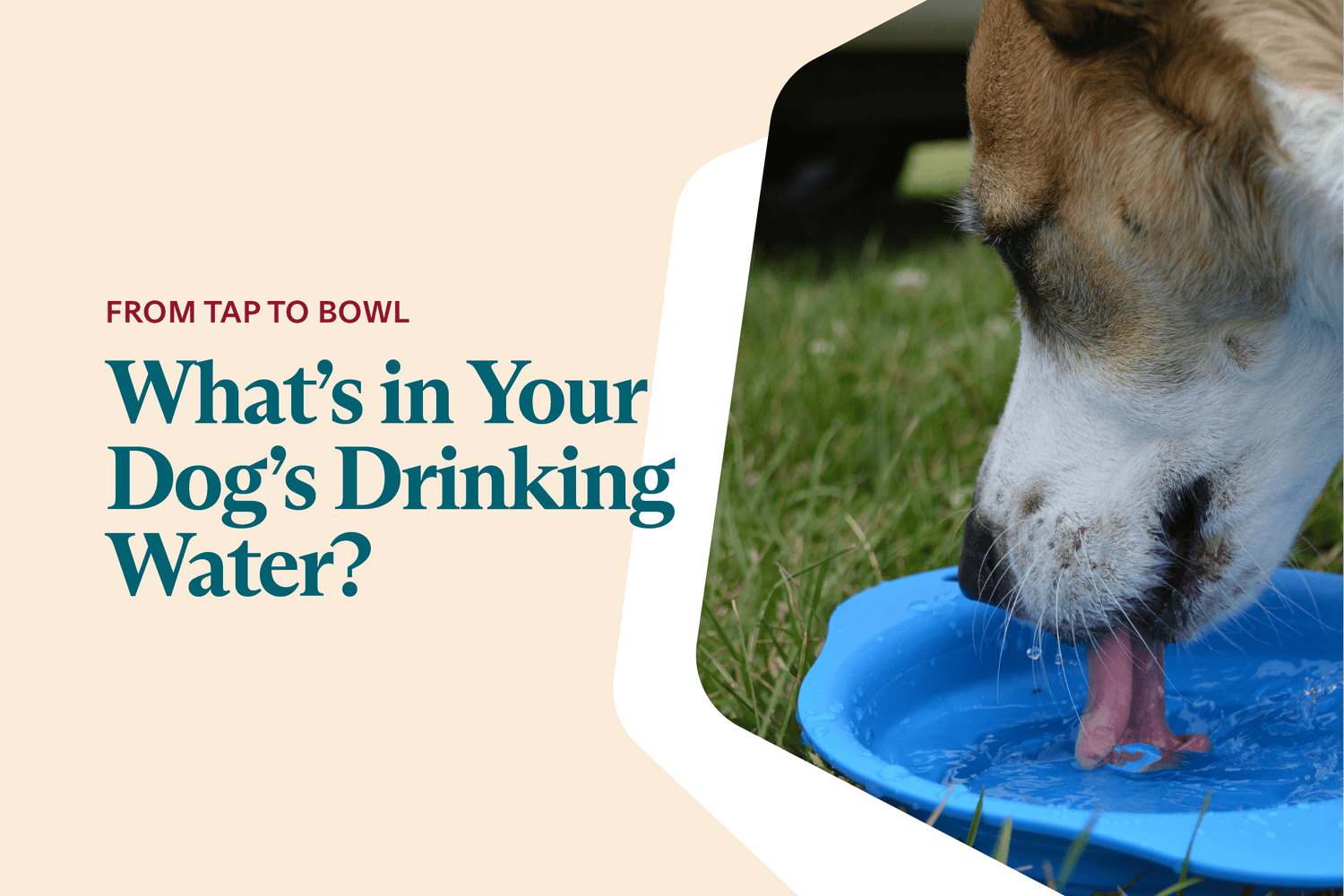I share a lot with my pup, Sonder. He sleeps in my bed (much to my partner’s chagrin), rides in my car, and even gets tastes of my ice cream. And since I primarily work from my home office, our daily routines are intimately linked, from our first walk of the day to our last “out” before bedtime. But it wasn’t until I started my research in the One Health space that I really thought about how, with all of the things we have in common, Sonder is often just as likely to be exposed to the good as the not-so-good things life can throw our way. On my research team, we investigate how these aspects of our shared environment, from the people and animals we encounter to the food that we eat, impact dog health and wellbeing in the short- and long-term. We recently published the results of a study where we investigated one of these environmental factors: drinking water.
Drinking water in the United States
Here in the U.S., municipal drinking water - water that is provided to people’s homes and businesses by cities, counties, and other local authorities - is regularly monitored for contaminants like bacteria, chemicals, and other potentially harmful elements. This helps keep our drinking water safe. But according to the Environmental Protection Agency (EPA), about 15% of the population relies on private wells for their drinking water. These water sources are not subject to the same monitoring standards and regulations, and therefore at higher risk for contamination, depending on where they are located and how often the owners are able to pay to have them checked.
Dogs (and cats) share our water
Sonder and I definitely drink from the same water source. I live in a city, so that means we have municipal tap water. I use a Brita for an added layer of filtering, and fill Sonder’s bowl using that pitcher as well. It’s pretty common for companion animals to rely on the same drinking water as their people, which means they are also susceptible to whatever additives may be present in that water. For those households reliant on private wells, this is concerning because little is known about the quality of these supplies or potential rates of contamination.
Going straight to the source
Drinking water toxicity from heavy metals and other contaminants can lead to both acute and chronic health conditions including organ failure in humans and dogs (1–5). Heavy metals are commonly found in groundwater, which can affect drinking water quality, specifically if from a well. In order to find out what the risk of heavy metal exposure through drinking water is for dogs in the U.S., we reached out to 200 of our amazing Dog Aging Project participants across 10 different states who rely on well water, and asked them to send us samples of their dogs’ drinking water. When the samples arrived in the lab, we analyzed them for the presence of 28 different heavy metals, eight of which have EPA-designated maximum contaminant levels (MCLs) because they are known to cause chronic health issues in people after long-term exposure, and five that have health guidance levels.
What we found: Heavy metals all around
Across all of the 180 water samples that were returned to our lab, we found detectable levels of all metals tested. Twenty-one (75%) of the metals we tested were found in at least one sample in every state (6).
There were 126 instances when arsenic, lead, copper, sodium, strontium, nickel, or vanadium was above the EPA MCL or health guidance level.
Samples with arsenic, lead, or copper were above the MCL came from 8 out of 10 states included in the study.
In some cases, other features of the local environment near the home and well, such as golf course, septic drain fields, fracking sites, quarries, heating sources, and estuaries and marshes, were associated with the presence or absence of certain metals.
When we looked at reported health outcomes for dogs living in the homes, we identified a potential association between the presence of titanium and chromium, and the occurrence of a known health condition in dogs.
Dogs as sentinels
One of the most incredible things about our relationship with dogs is how much of our lives we are able to share with them. But that also means that they are, by default, what we call a “sentinel” species, or animals who can be indicators of how our environments are impacting us, in both positive and negative ways. That means our study’s findings are important for both dogs and people, alike. By taking the time to investigate how dogs and people in different communities around the world are impacted by shared risk factors, we can then take the next steps to find ways to help us all thrive in our shared lives, longer.
1. Sankhla MS, Kumar R. Contaminant of Heavy Metals in Groundwater & its Toxic Effects on Human Health & Environment [Internet]. 2019 [cited 2023 Nov 3]. Available from: https://papers.ssrn.com/abstract=3490718
Biogliography:
Courtney Sexton is a Postdoctoral research scientist at the Virginia-Maryland College of Veterinary Medicine and has a PhD in Evolutionary Anthropology and Comparative Animal Behavior from The George Washington University.
Join the conversation at community.fluent.pet!





Leave a comment
This site is protected by hCaptcha and the hCaptcha Privacy Policy and Terms of Service apply.